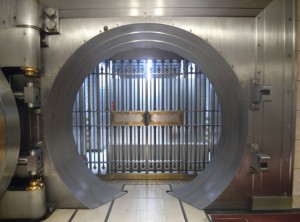None of the major banks have made marina loans for years. That’s left room for small banks, finance companies and hard money lenders. I’ve addressed the two biggest myths to making marina loans on the prior blog to this series. So how do we structure a marina loan to minimize risk?
Bottom Line It For Me
 The first step in determining if a loan is worth making is to examine the financials. Unfortunately, marina owners generally make this a difficult thing for lenders. You do not have a standardized accounting system like you do with other major property types. Owners can embed a variety of personal expenses in their financial statements that dilute net operating income and make the marina less attractive to a lender. Consolidated financial statements can make it just that much harder to figure out the real income and expenses of a marina. I can create a fairly long list on this topic but let’s do an end around. Once again, you can hire experts to restate incomes and expenses to give you real numbers to lend on. Once you have the real numbers, you can come up with a real debt coverage ratio and loan terms that reflect the perceived risk of the investment. Not restating the income and expense statement or doing it without knowledge of how marinas operate puts the loan at risk from day one.
The first step in determining if a loan is worth making is to examine the financials. Unfortunately, marina owners generally make this a difficult thing for lenders. You do not have a standardized accounting system like you do with other major property types. Owners can embed a variety of personal expenses in their financial statements that dilute net operating income and make the marina less attractive to a lender. Consolidated financial statements can make it just that much harder to figure out the real income and expenses of a marina. I can create a fairly long list on this topic but let’s do an end around. Once again, you can hire experts to restate incomes and expenses to give you real numbers to lend on. Once you have the real numbers, you can come up with a real debt coverage ratio and loan terms that reflect the perceived risk of the investment. Not restating the income and expense statement or doing it without knowledge of how marinas operate puts the loan at risk from day one.
Debt Coverage Ratio in the Dark
If I were a lender, I would offer different debt coverage ratios to marinas based on risk. One-size-fits-all works well with common property types but I don’t believe there should be a universal debt coverage ratio for a marina. Here’s why:
- Marinas vary so much in terms of businesses, services and market position that the debt coverage ratio should reflect this. Would you have the same debt coverage ratio for a new Class A office building or an old, tired Class C office building? The same analogy should apply to marinas.
- If you do not have the knowledge of how to correctly restate the operating statements, raise your debt coverage ratio. The same goes for hiring experts to help you before you make the loan commitment.
Ideas for the Experts
If I were a lender I would want certain terms in the loan agreements.
- Have the borrower pay for a condition report every three years to be performed by a marina design & construction firm. Make sure the asset is not depreciating to the level that it could ever become a problem for you.
- Have the borrower pay for the initial condition report prior to loan commitment. If you don’t make the loan, the marina lender has something they can use for the next lender. Know what you are getting into if you are not going to inspect the property for yourself.
- Establish a mandatory reserve for replacement escrow account. Based on the condition report, you can easily determine how much money needs to be set aside for reserves. Make it a requirement that a certain percentage be set aside in a reserve account in your bank.
- Hire an expert to examine the financial statements annually. By that I mean profit & loss and balance sheets. You would not believe how many useful ratios you can extract from these types of financial statements and how many clues you can get to how well the marina is operating by comparing ratios from year to year. This is something I explore in depth in my upcoming Marina Investment book. Equally as important, the ratios can show you that the marina businesses are beginning to experience financial difficulties well before the government officially declares it a recession.
- Base a loan on meeting certain minimum financial ratios. If they are not met, have the option to hire a marina management company to help with operations. You get two benefits here. Even if they only offer consulting, they can provide fresh ideas and new perspectives that can help management try or improve new things to keep those ratios in line. And in the worst case scenario where the marina defaults on the loan and you are forced to repossess, you’ve already got a marina management team in place to make the transition smoothly, manage the asset during the time it takes to sell, and help maximize net operating income prior to sale. Having a management company that already knows the marina from its prior financial statement examination is a big plus.
- If the marina were a new and/or used boat sales operation, collateralize the loan with whatever boat inventory the marina may own. I know of one marina that has over $2 million in used boat inventory. Even at liquidation prices, there is still a lot of money there… if you structure your loan so it is a lien on existing inventory.
- Build the costs of experts into the loan documents.
Solution for the Cost of the Experts
I understand that for typical commercial real estate loans on common property types you’re not in the position of passing lots of costs on to the borrower. It’s just too competitive and your prospective borrowers will walk. Not so with marinas. Too many lenders have bought into the two myths I offered many solutions for in the first part of this series – that marina loans are riskier and they have a greater chance of default.
Now here’s the fun part – you can get a world of marina expertise for free! I’m not joking; I’m serious. Remember in Part 1 where I mention that the major players don’t make marina loans, you have few competitors and in most cases your borrower doesn’t have other sources to shop around? That puts you in the driver seat. Why not pass the cost of these experts on to the borrower?
You can do this a couple of ways.
- Since the business component of a marina is well known, have the borrower do business at your bank. It’s done all the time with business loans. With proper advance notice and giving the borrower the ability to select the vendor, you can debit the cost from the borrower’s account.
- If you setup a reserve for replacement escrow account‚ you can also use that reserve to pay the costs of the expert(s). Let’s say you’re going to reserve 3 percent of gross income for replacing building components, docks and piers. If you upped it to 4 percent, you can have the cost of annual financial statement reviews and other small cost expertise paid for. If you require, say, a condition survey of the docks to be performed every three years, several years of a one or two percent reserve should easily cover it.
Conclusions
As a lender, you have an opportunity at your fingertips. It’s simply supply and demand working in your favor. Regardless of the economy, as long as the major lenders don’t heed the advice I’ve offered, there will continue to be more marina loan demand than supply. You’re in the position to call the shots. If you’re still skeptical, try a couple of loans on these terms. See how well they perform. Think of it as a prototype. With over 12,000 marinas in the country, you don’t need a monopoly. You can pick and choose what you believe are the best loans to make. You can get better personal loan guarantees than you could a common property type where anyone is willing to make the loan. You can set the terms. You can have a marina management company review the books and the operations. They can do balance sheet analysis to alert you when the business in residence is starting to falter well before the economy is well into a recession. You can have the borrowers pay the costs of experts to make sure your loan stays a performing asset and to minimize any risk that you’ll get a “beat up” asset should you have to call the loan.
There is one risk you can’t contain. It’s the risk that the big banks will read this blog and beat you to the punch.

